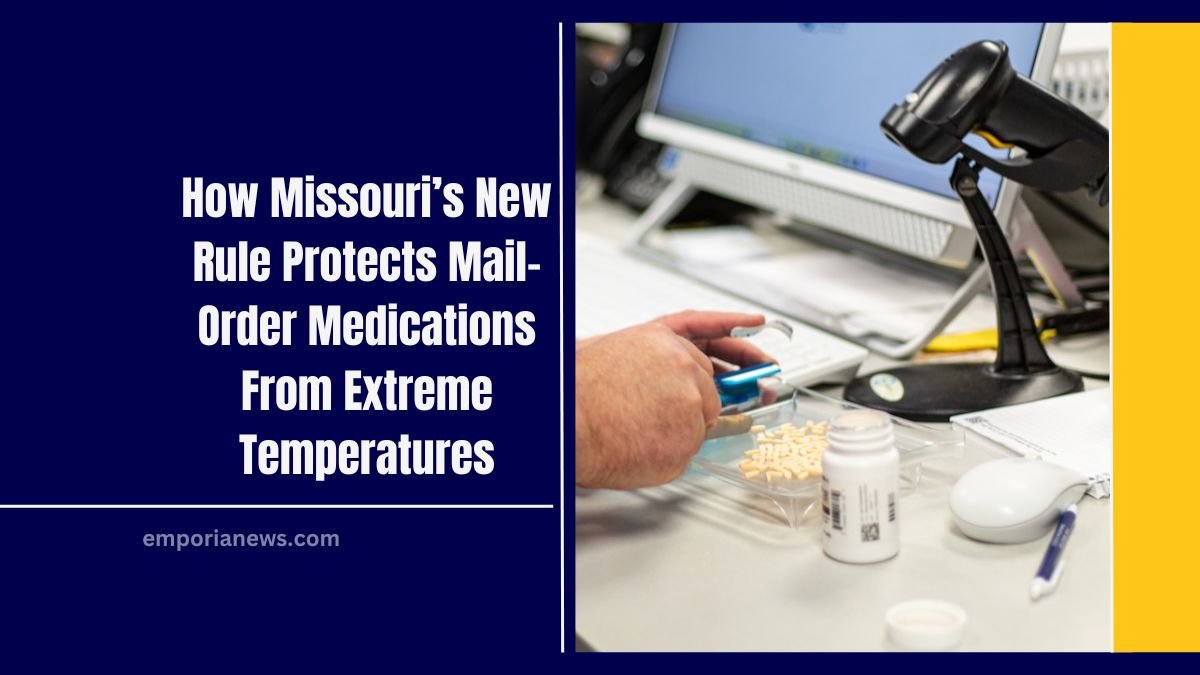Missouri has implemented new regulations aimed at safeguarding mail-order medications from the adverse effects of extreme heat and cold.
With the increasing reliance on mail-order prescriptions, especially during the COVID-19 pandemic, ensuring the safety and efficacy of medications during transit has become a pressing concern.
This article delves into the details of Missouri’s new rule, its implications, and the challenges it seeks to address.
The New Missouri Rule: Enhancing Safety for Mailed Medications
The Missouri Board of Pharmacy revised its regulations, effective December 30, 2024, to address the growing concerns surrounding temperature-sensitive medications. Here are the key highlights of the new rule:
| Aspect | Details |
|---|---|
| Purpose | Protect the integrity and safety of medications during transit. |
| Requirements | Pharmacies must contact patients before shipping and provide guidelines for compromised medicines. |
| Packaging Standards | Ensure medications are shipped in appropriate containers to maintain stability. |
| Patient Resources | Include contact details for state regulators and instructions for reporting compromised drugs. |
The rule aims to prevent medications from being damaged by exposure to extreme temperatures, which could compromise their effectiveness.
Why Temperature Matters for Medications
Extreme temperatures, whether too hot or too cold, can alter the chemical composition of medications, rendering them less effective or even harmful. Here’s why this is critical:
- Potency Loss: Heat or cold can degrade the active ingredients, reducing the medication’s efficacy.
- Visual Cues May Be Absent: Medications exposed to extreme temperatures may appear normal, making it difficult for patients to detect issues.
- Health Risks: Ineffective medications can lead to serious health complications, especially for life-saving drugs.
For instance, medications requiring refrigeration or those designed to be stored at room temperature could lose their effectiveness when exposed to conditions outside these ranges.
Challenges Addressed and Unresolved Issues
What the Rule Achieves
- Increased Awareness: Patients are informed about how to handle medications that may have been compromised.
- Improved Packaging: Pharmacies must adopt packaging standards to safeguard medications.
- Proactive Communication: Pharmacies are required to contact patients before shipping.
Remaining Gaps
Despite these improvements, some critics argue the rule does not go far enough:
- No Mandatory Temperature Sensors: The rule does not require temperature-monitoring devices in shipments, leaving patients unsure about their medications’ condition.
- PBM Influence: Pharmacy Benefit Managers (PBMs) often compel patients to use mail-order services, limiting their options for obtaining medications.
A Closer Look: The Role of Temperature Sensors
Temperature sensors are a potential solution for ensuring medications remain within safe temperature ranges during transit. However, they are not yet mandated by Missouri’s regulations.
Advocates argue that requiring sensors could significantly reduce the risk of compromised medications.
| Temperature Guidelines | Requirement | Current Regulation |
|---|---|---|
| Refrigerated Medications | Must remain between 2-8°C | Monitored during shipping only. |
| Room Temperature Medications | Should stay between 20-25°C | No shipping temperature mandates. |
Legislative Push for Additional Safeguards
Missouri lawmakers are considering legislation to limit the influence of PBMs and give patients more choices. This includes:
- Preventing PBMs from forcing patients to use mail-order pharmacies.
- Encouraging the use of community pharmacies for improved oversight and accessibility.
Missouri’s revised rule marks a significant step toward improving the safety of mail-order medications, addressing the risks posed by extreme temperatures during transit.
However, the absence of mandatory temperature sensors and ongoing reliance on mail-order services by PBMs highlight areas for further improvement.
With continued advocacy and legislative efforts, the goal of ensuring medication safety for all patients is within reach. For now, patients should remain vigilant and proactive in safeguarding their health.




